
Digging Deep into the Cosmos Network Stack for Application-specific blockchains
Are you looking to build a blockchain? Or do you want to develop use case-specific dApps? Each of these tasks requires dependency on their relevant tech stack. A handful of blockchains offer a comprehensive tech stack, including the Cosmos blockchain that provides web3 developers with a full range of Cosmos network stack, enabling them to create custom, application-specific blockchains and a variety of decentralized projects from scratch. Cosmos blockchain stack mainly includes Cosmos SDK framework, IBC, Tendermint BFT, and a range of tools that allows for endless customization of blockchains, dApps, and other use cases.
Cosmos ecosystem and application-specific blockchains- an overview
The Cosmos blockchain ecosystem—consisting of Hub and Zones, is designed specifically to support the creation of an interoperable blockchain universe consisting of independent application-specific blockchains interconnected through IBC. Enterprises can use Cosmos SDK to build everything from scratch or leverage the Cosmos Hub’s underlying currency model, consensus, security, etc to build AppChain. Further, leveraging the Cosmos SDK, businesses can easily create a custom, single-application blockchain (AppChain). Meaning, you can implement your desired consensus algorithm, customize the infrastructure as required, and introduce your own token model. Remember that, developers have the freedom to experiment with the Cosmos network stack, frameworks, and tools to build innovative use cases. All these features on Cosmos blockchain are ideal for enterprises that seek to create an independent blockchain on the Cosmos ecosystem from the ground level rather than building on any Layer-1 or Layer-2 solution.

Want more details on how enterprises can use the Cosmos AppChain ecosystem? Read our detailed guide: Cosmos Empowering Enterprises through Application-specific blockchains
Digging into the Cosmos network stack for application-specific blockchains
The ever-expanding ecosystem of Cosmos network provides a wide range of developer stack— frameworks and developer tools that simplify the development of application-specific blockchains, smart contracts, and dApps. Each of these projects requires web3 developers to focus on different layers of the Cosmos blockchain. As such, let’s explore the layer-wise architecture of Cosmos:
Layer- 3 Application: The application layer of the Cosmos Network is responsible for updating the state of transactions, in simple words – completing transactions.
Layer- 2 Consensus: Powered by Tendermint BFT, the consensus layer in Cosmos is responsible for enforcing the network rules that describe what nodes within the network should do to reach the consensus about the broadcasted transactions. It also deals with the generation and verification of blocks.
Layer 1- Networking- This layer allows the Cosmos network to maintain communication between transactions and blockchains built as Zones.
As you can see in the image below, the state machine is equal to the application and built with Cosmos SDK. CometBFT handles consensus and networking layers. Lastly, the role of the blockchain node is included in all three layers. That’s how the three layers of the Cosmos ecosystem operate with their corresponding Cosmos Network stack.
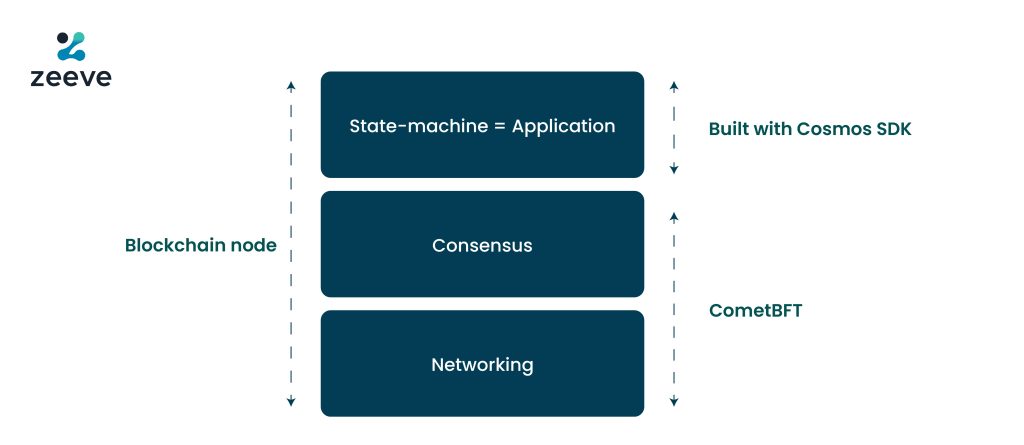
The need for Cosmos Network Stack
As we know, the Cosmos stack enables the development of application-specific blockchains. But exactly how? Digging a level deeper, we find the following three aspects of AppChain development where Cosmos network stack for application-specific blockchains helps:
- Designing the modular structure of the application-specific blockchain.
- Implementing an application-agnostic consensus engine.
- Enabling cross-chain communication ability in the topological structure of AppChains.
The Cosmos Network Stack for Application specific blockchains (ASBCs)
Cosmos SDK
Cosmos SDK is an open-source blockchain framework that facilitates the development of proof-of-stake (PoS) and Proof-of-Authority (PoA) blockchains like the Cosmos Hub and Cosmos Zones. Blockchains built using Cosmos SDK are termed application-specific blockchains that manage a single application in its ecosystem. Cosmos SDK aims to simplify custom blockchain development, including implementing the consensus mechanism, cryptocurrency or the token model, validators, and architecture.
All the SDK-based application-specific blockchains are easy to build with composable modules publicly available for developers. Hence, anyone willing to create a custom blockchain can create or leverage existing modules. And, if you want to build a Proof-of-Stake system, Cosmos SDK allows for Staking and Slashing modules in the blockchain. Also, Cosmos SDK has a default consensus engine- CometBFT- a highly matured consensus engine powering PoS infrastructure. The Cosmos SDK ensures the all-round security of blockchains, having implemented the capabilities-based system. Cosmos SDK is suitable for application-specific blockchain projects for industries spanning DeFi, web3 games, video streaming, healthcare, prediction markets, and cross-border payments.
Tendermint BFT
Tendermint is a leading BFT (Byzantine Fault Tolerance) engine that securely and consistently replicates desired applications on various machines. Being secured, Tendermint BFT works even when ⅓ of the machine randomly fails. Whereas being consistent means the same set of logs are broadcasted on non-faulty machines from where the machine computes the same state. This idea of a secure plus consistent system is critical for fault tolerance in a wide range of applications, from tokens to infrastructure improvement, orchestration, and more.
Tendermint includes two main components— Tendermint Core and Application Blockchain Interface (ABCI). The former is an application-agnostic blockchain consensus engine for verifying that the same transactions are recorded on the non-faulty machines and in the same order. The latter is a generic application interface, generally known as a Socket protocol, that connects the Tendermint BFT engine to the application while allowing developers to use any programming language that suits their needs, which eliminates the need to gain expertise on a new protocol-specific language.
Tendermint BFT saves significant development time as it packages the networking and consensus layer of Cosmos network and forms a generic engine, allowing developers to concentrate on application development. The properties of Tendermint, such as public/private blockchain compatibility, high performance, instant finality, and security, make it a state-of-the-art consensus engine to be adopted on a large scale. A few popular blockchain projects built with Tendermint Core are Binance DEX, Oasis Labs, and IRISnet.
IBC Protocol
IBC, or Inter-blockchain communication protocol, is a reliable, organized, and authenticated interface for broadcasting messages between independent application-specific blockchains. Simply put, IBC addresses the challenges of cross-chain communication that heterogeneous blockchains face when they wish to exchange assets or resources. Likewise, this problem arises for application-specific blockchains because they need to exchange needs to happen between unique, purpose-built blockchains. Cosmos implements IBC into Cosmos SDK to enable cross-chain communication, which is why Cosmos is said to be an interoperable ecosystem for AppChains. Note that IBC’s working mechanism is purely decentralized and permissionless, unlike the bridges. Hence IBC maintains the security of all the chains (Zones) connected to the Cosmos Hub.
Cosmos Application-specific blockchains, using any consensus algorithm, can implement IBC to enable interoperability and bypass other issues like high transaction cost, network load, and low transaction finality. To accelerate its adoption, IBC continues to be composable by defining low-level primitives and application-level standards for authentication. Therefore, Ledger that supports the IBC-compatible standards can connect without requiring special permissions.
Now that you are familiar with the Cosmos network stack for application-specific blockchains (ASBCs), let’s know about the network’s essential tools and developer resources. Cosmos wallets, Cosmos explorers, Cosmos CLI, APIs, Cosmos wallets, and Nodes are the necessary tools and components that are essential to make your AppChains fully operative at all levels once you build it using the corresponding stack. You can get a complete list of tools from Cosmos Network’s official documentation here.
Build your Cosmos-based AppChains with Zeeve
As discussed, building an application-specific blockchain on the Cosmos requires you to build on all three layers; application, consensus, and network —- with the relevant Cosmos network stack. For this, you need to add various components to your AppChain infrastructure, such as wallets, explorers, faucets, validators, CLIs, and more. While you can manage all these requirements on your own, it comes with a great deal of challenges and technical complexities. Zeeve simplifies your Cosmos journey by handling all the AppChain network-level complexities on your behalf and meanwhile allowing you to select the right stack. Also, we are open to customizing our AppChain services based on your project-specific requirements so that you can launch your Cosmos SDK based blockchain without hassle, instantly. For your further queries, you can connect with our blockchain consultants or schedule a one-to-one call.


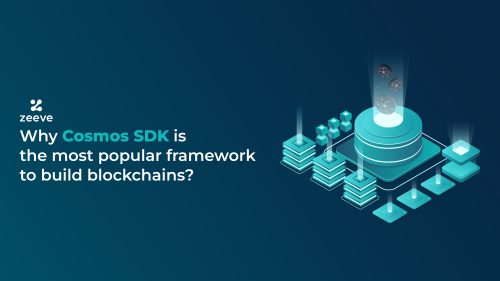

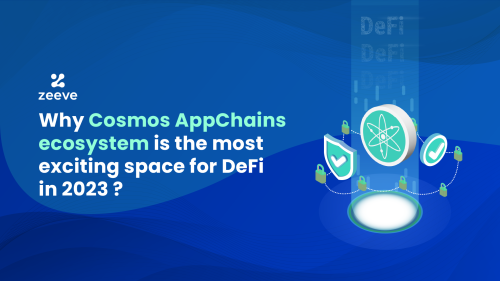
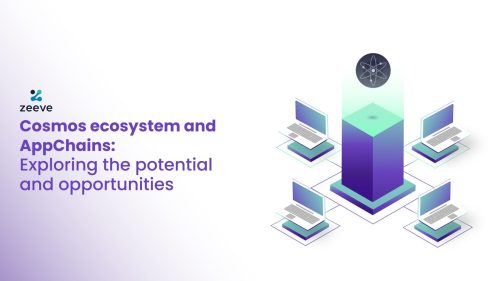
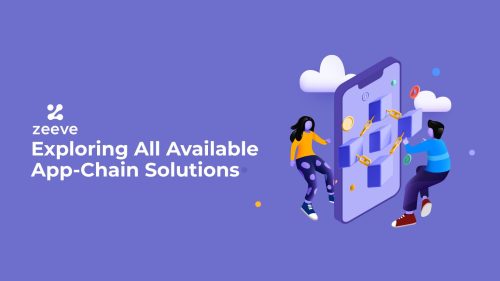
Responses